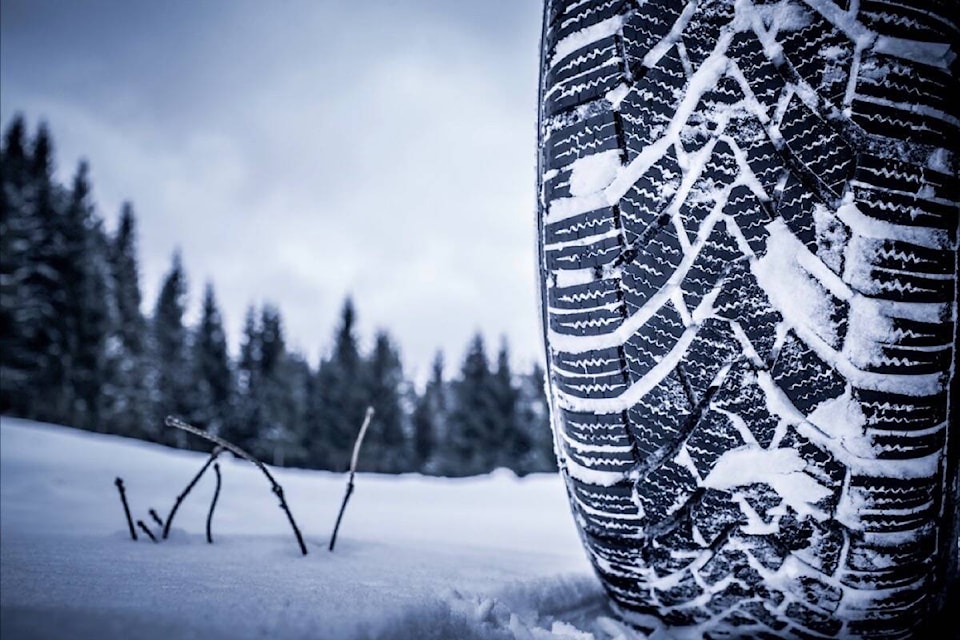While we all enjoy the beautiful fall weather across the province, winter lurks right around the corner. In fact, next Friday, October 1, 2021, is the date when snow tires should be installed on your vehicles.
Winter tires or chains are required on most routes in British Columbia from October 1 to April 30 each year.
Winter tires provide better traction in snow, slush and ice. It is advised that drivers use four matched winter tires that carry the mountain/snowflake symbol and with tread no less than 3.5 mm. This applies even if you drive a four wheel drive vehicle.
Both the 3-peaked mountain/snowflake and all-season Mud and Snow (M+S) tires meet the legal requirements for winter tire designation in B.C. Winter tires with a 3-peaked mountain and snowflake symbol provide good winter driving performance, especially in harsh winter conditions. They outperform mud and snow tires at temperatures of 7 C or lower. The natural rubber compound in these tires helps them to stay soft and flexible in colder temperatures, according to information from the Shift Into Winter Campaign.
Chains on summer tires are not an acceptable substitute for legal winter tires on signed B.C. highways. On the south coast, however, many routes within the Lower Mainland and on Vancouver Island do not require winter tires. To see where they are or are not required, visit: https://www2.gov.bc.ca/assets/gov/driving-and-transportation/driving/winter/pdfs/southcoastmap.pdf.
Drivers without the proper winter tires in good condition driving on designated B.C. highways can be fined $121.
Some tips about winter tires:
• Make sure they match
All four tires need to match in size, tread type, and depth. You need at least two matching winter tires on the primary drive axle, even for a 4X4 vehicle. Using different types of tires compromises stability and could cause your vehicle to fishtail.
• Check wear and pressure
Always check the wear of your winter tires before installing them. Monitor tire pressure often as it can drop in cold weather.
• Carry chains or other traction devices
Passenger vehicles may use alternative traction devices such as chains with their winter tires. Know how to put them on and test them for performance in winter conditions before using them.
READ: Winter tires, chains now mandatory along most B.C. highways
READ: B.C. truck drivers to face higher fines for not using winter tire chains
carolyn.grant@kimberleybulletin.com
Like us on Facebook and follow us on Twitter
